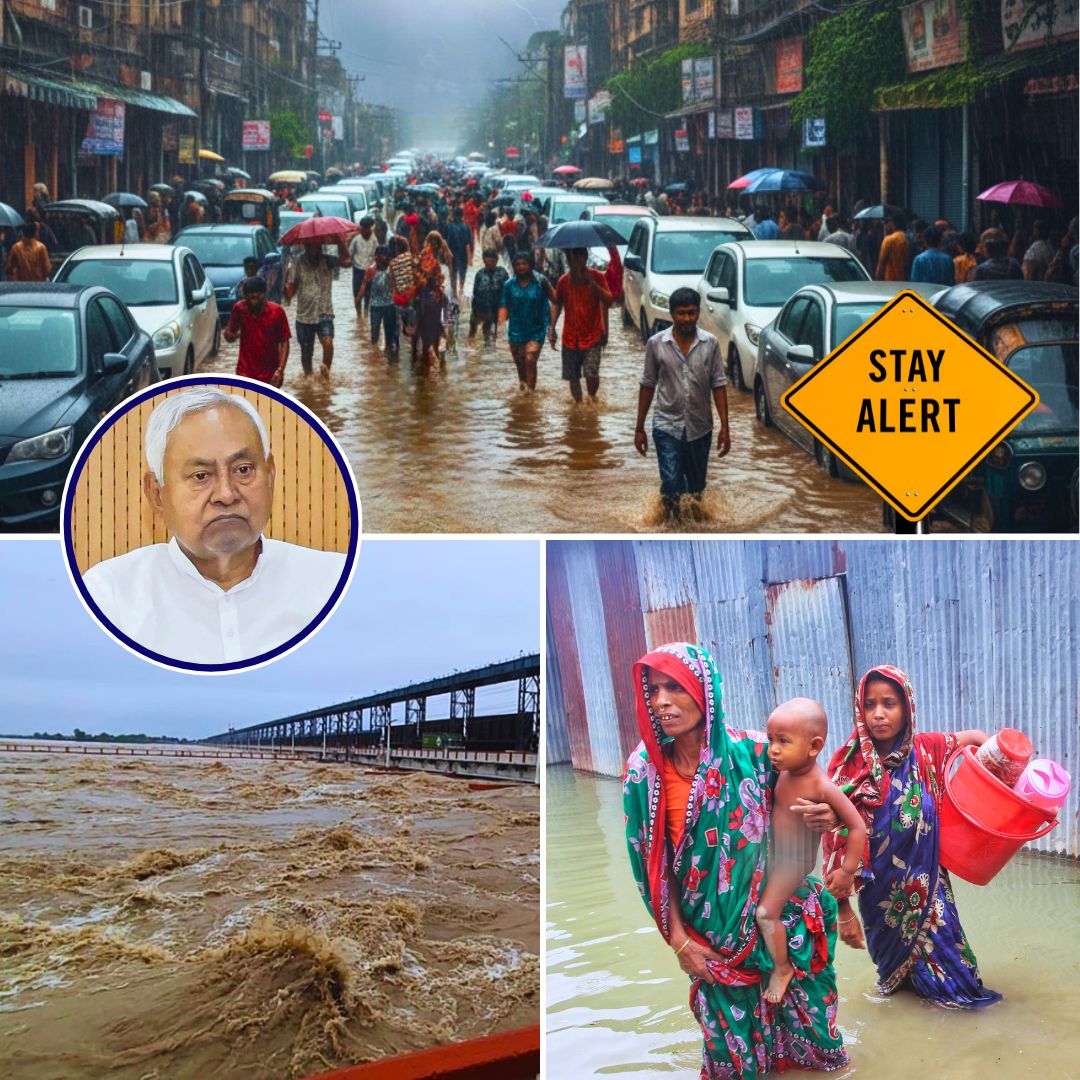The India Meteorological Department (IMD) has issued a flash flood alert for 28 districts across Bihar, including key areas like Patna, Gaya, Rohtas, Bhagalpur, and Darbhanga. This warning comes after four consecutive days of heavy to extremely heavy rainfall caused by a deep depression over the Bay of Bengal and an upper air cyclonic circulation over Uttar Pradesh.
The relentless rain has caused widespread waterlogging and disruption in daily life, severely affecting government offices, hospitals, roads, and schools. Local administrations report collapsing mud houses and submerged vehicles, particularly in Sasaram, where over 100 vehicles were underwater.
Authorities have urged residents to remain vigilant, avoid unnecessary travel, and prepare for possible evacuations as river water levels continue rising.
Severe Weather Conditions and Their Impact
Between late September and early October 2025, Bihar has experienced a rare and intense wet spell. In the 24 hours leading up to October 2, some districts, such as Begusarai, recorded over 160mm of rainfall, far exceeding normal levels. This intensity of precipitation has triggered a flash flood threat with the potential for lightning and thunderstorms widespread across the state.
The IMD forecasts moderate to heavy rain continuing for the next four to five days, with isolated areas possibly facing very heavy to extremely heavy rainfall. These conditions have resulted in large areas becoming submerged, including Narayan Medical College’s entire campus in Jamuhar, rendering access difficult and complicating relief efforts. Public safety advisories emphasize caution against flash floods and lightning, highlighting the increasing risks associated with this weather phenomenon.
Bihar’s Chronic Flood Challenges and Broader Context
Flooding in Bihar is a recurrent episode, exacerbated by the state’s geography with low-lying plains and numerous rivers prone to swelling during monsoon season. Recent years have seen worsening flood situations linked to climate change, which has intensified monsoon variability and rainfall patterns.
Historical data reflects massive displacement and damage each flood season; for example, earlier in 2025, over 27 lakh people were affected by floods in Bihar, causing severe humanitarian distress. Past responses have involved large-scale evacuation and relief operations, but the increasing frequency and severity demand stronger flood management infrastructure, better early warning systems, and community preparedness to reduce vulnerabilities.
Bihar’s situation also resonates with neighbouring regions facing similar weather threats, prompting coordinated disaster risk reduction strategies.
The Logical Indian’s Perspective
At The Logical Indian, the ongoing flood threat in Bihar underscores the urgent need for holistic responses grounded in compassion, cooperation, and innovation. Natural disasters disproportionately affect the most vulnerable, including impoverished communities with limited resources to cope with crises.
Government bodies, civil society, and citizens must work together to enhance disaster preparedness, implement sustainable climate adaptation measures, and ensure timely humanitarian aid. Community solidarity, kindness, and sharing practical knowledge form the backbone of resilience in times of adversity.
We urge readers to consider how local communities in Bihar and across India can strengthen these bonds and collaboratively address the challenges posed by recurring floods.











